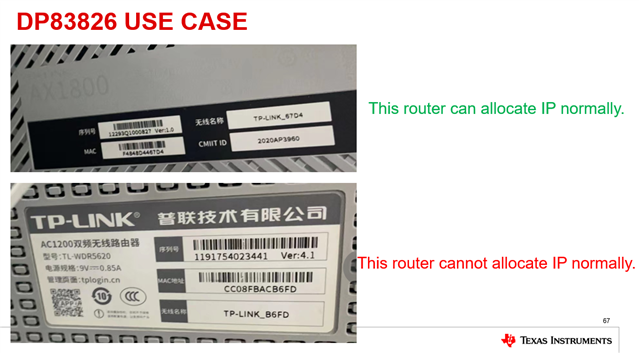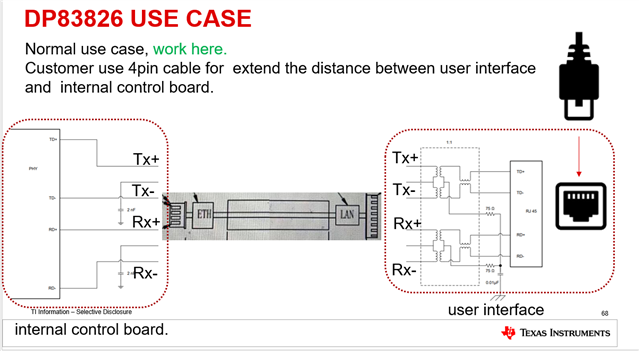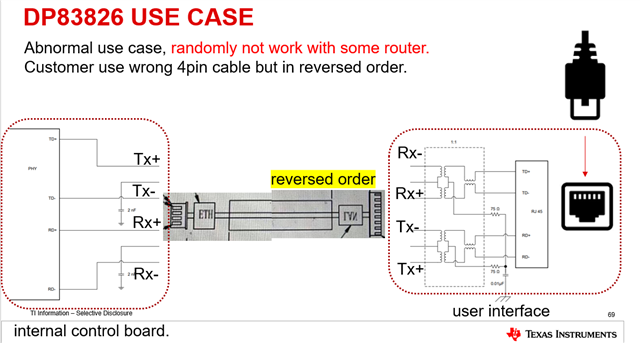Tool/software:
hi team,
My customer using the DP83826 phy with ESP32 for ethernet connection here.
and customer feedback there is a issue when pairing with different router. then we finish below test for double check :
1. ping test for a day within 0 Packet Loss Rate, but only cannot get IP sometime.
2. Eye diagram test passed

then we start analysis the system as below and found the cause here. after customer use the correct 4pin cable, all router can get the IP.


but customer already have some production ship to the market with such wrong order TXRX order.
can you help to share the risk and how it works sometime with wrong connection order with some router here?




 、
、